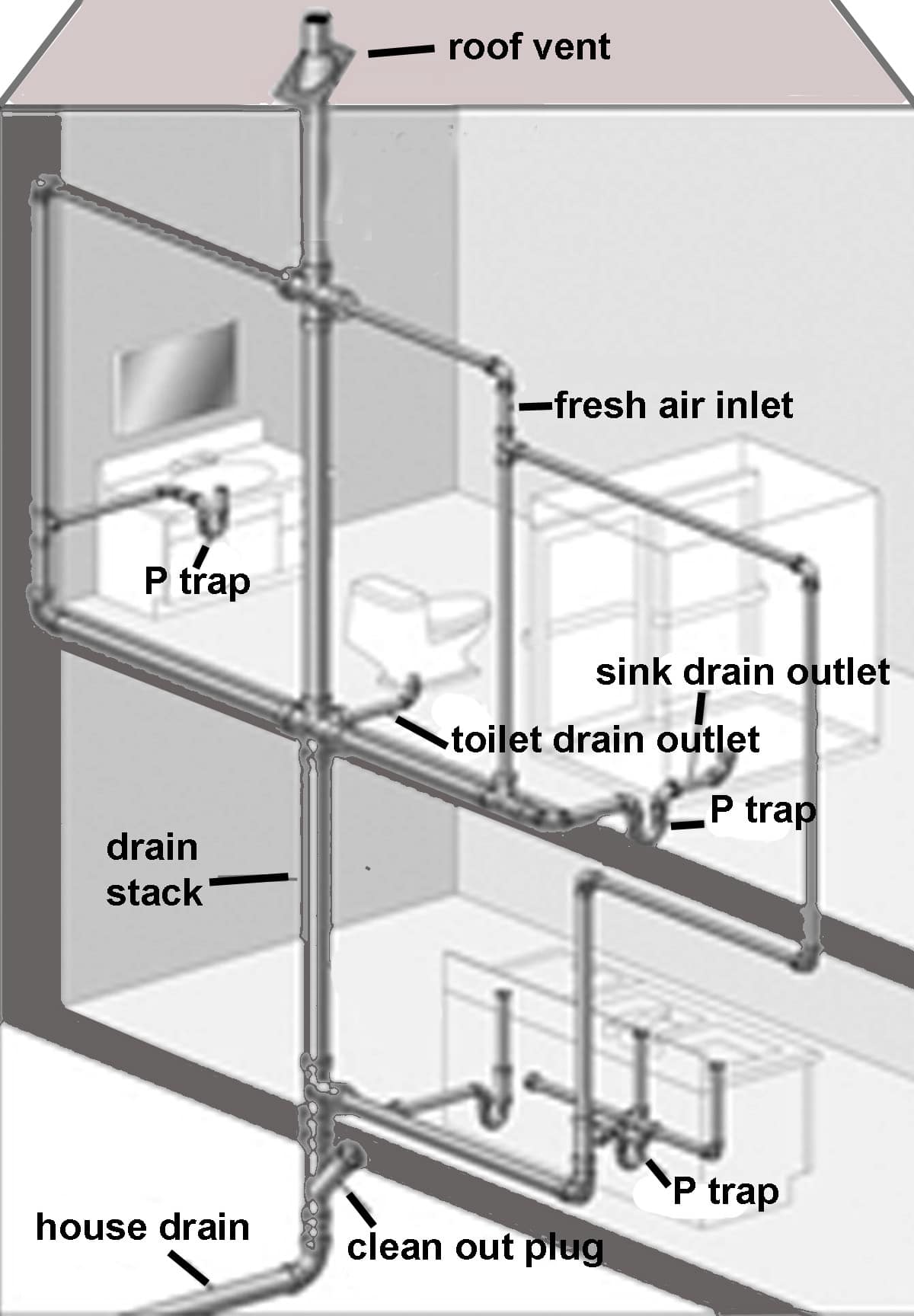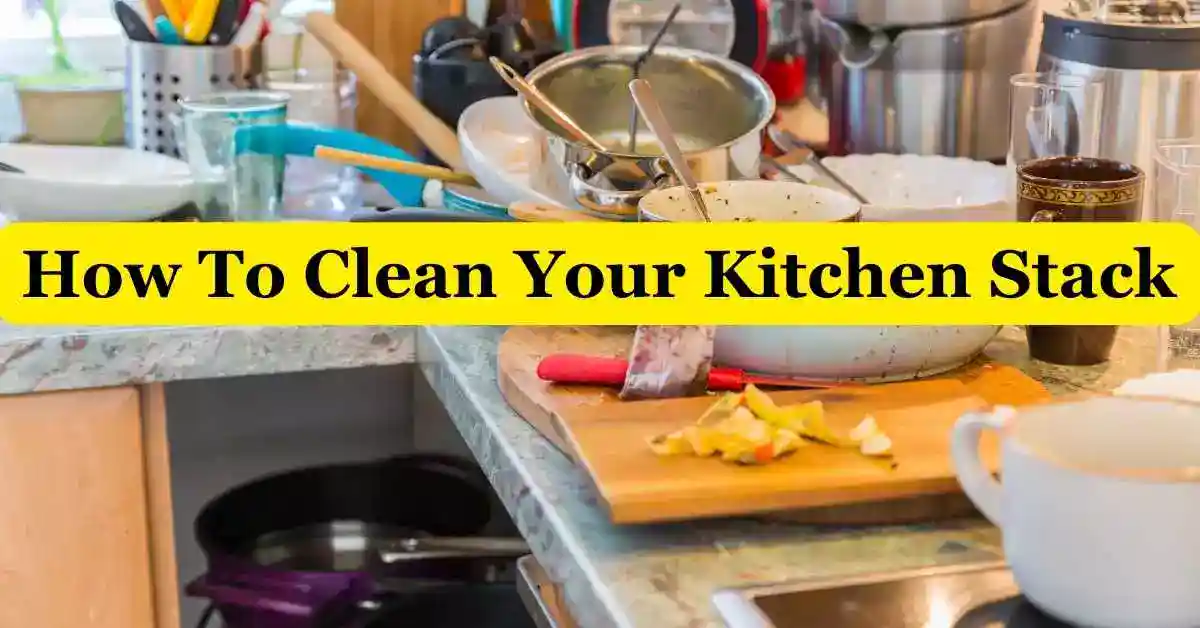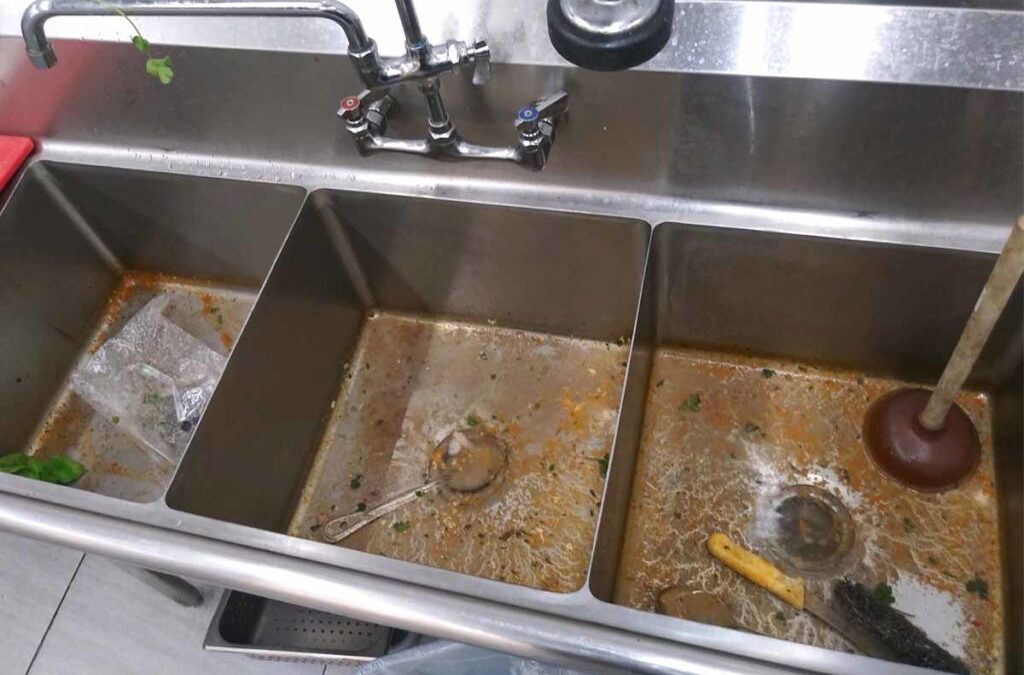Imagine walking into your kitchen, ready to whip up a delicious meal. The counters are spotless, the floors are gleaming, but there’s one area you might be overlooking – your kitchen stack.
You might be wondering, “What is kitchen stack cleaning, and why should I care? ” Well, you’re not alone. Many people overlook this crucial aspect of kitchen maintenance, yet it plays a vital role in keeping your cooking space safe and efficient.
Kitchen stack cleaning isn’t just about aesthetics; it’s about ensuring the heart of your home functions smoothly. Neglecting it can lead to unpleasant odors, inefficient ventilation, and even potential fire hazards. But don’t worry, we’re here to guide you through everything you need to know about kitchen stack cleaning. So, if you’re ready to discover how this little-known practice can transform your kitchen experience, read on!
Importance Of Kitchen Stack Cleaning
Kitchen stack cleaning is vital for a healthy cooking space. Regular cleaning prevents buildup of grease and grime. This helps maintain a safe and efficient kitchen environment. Dirty stacks can lead to fire hazards and health risks. Clean stacks ensure the kitchen runs smoothly.
Why Kitchen Stack Cleaning Matters
Clean stacks help prevent unpleasant odors. Grease and food particles can rot and smell bad. Regular cleaning keeps these odors away. This creates a more pleasant kitchen experience.
Health Benefits Of Kitchen Stack Cleaning
Proper cleaning reduces bacteria and mold growth. These can cause health issues if left unchecked. Keeping stacks clean protects your health. A clean kitchen means safer food preparation.
Impact On Kitchen Efficiency
Clean stacks improve airflow. This helps kitchen equipment work better. Efficient airflow reduces energy use. This saves money and helps the environment.
Fire Safety And Kitchen Stack Cleaning
Grease buildup can lead to fires. Regular cleaning reduces this risk. A clean kitchen is a safer kitchen. Protect your home by keeping stacks clean.
Longevity Of Kitchen Equipment
Clean stacks help equipment last longer. Dirt and grime can cause wear and tear. Regular cleaning prevents this. This saves money on repairs and replacements.

Credit: www.balkandraincleaning.com
Components Of A Kitchen Stack
The kitchen stack is a key part of maintaining cleanliness. It includes several important components. Each plays a unique role in managing kitchen air quality.
These components work together to ensure a safe cooking environment. Regular cleaning of each part is essential for efficiency.
Exhaust Hoods
Exhaust hoods capture smoke and grease from cooking. They are the first line of defense against kitchen pollutants. A clean exhaust hood improves air quality and reduces fire risks.
Ductwork
Ductwork carries air from the kitchen to the outside. It can collect grease and dirt over time. Regular cleaning prevents blockages and ensures smooth airflow.
Fans And Vents
Fans and vents help move air through the kitchen stack. They ensure that smoke and odors exit the kitchen. Clean fans and vents maintain optimal air circulation.
Common Contaminants
Kitchen stack cleaning involves more than just wiping surfaces. It targets hidden contaminants that affect hygiene and performance. Understanding common contaminants helps in maintaining a clean and safe kitchen environment. Below are the main culprits that disrupt kitchen cleanliness.
Grease Build-up
Grease accumulates over time and coats kitchen surfaces. It clings to exhaust fans, walls, and countertops. This sticky residue attracts dirt and bacteria, making cleaning difficult. Regular removal prevents stubborn stains and reduces fire hazards.
Dust And Debris
Dust settles everywhere, including in kitchen stacks. It mixes with cooking particles, creating a layer that traps more contaminants. This accumulation can clog vents and reduce airflow. Frequent cleaning ensures efficient ventilation and cleaner air.
Pest Infestation
Pests find their way into kitchen stacks through tiny openings. They thrive on leftover food particles and moisture. Cockroaches and rodents are common invaders. These pests contaminate food and spread disease. Proper cleaning deters infestations and keeps pests at bay.
Health And Safety Concerns
Kitchen stack cleaning removes grease and grime from kitchen exhaust systems. This process reduces fire risks and improves air quality. Regular cleaning ensures a safer cooking environment.
When you think about kitchen stack cleaning, your mind might not immediately jump to health and safety concerns. However, neglecting this crucial task can lead to serious issues for both your home and business environments. From fire hazards to air quality problems, and even potential legal troubles, the stakes are high. Addressing these concerns isn’t just about maintaining a clean kitchen—it’s about ensuring a safe and healthy atmosphere for everyone.Fire Hazards
A major risk linked to kitchen stack cleaning is fire hazards. Grease and debris can accumulate in kitchen ducts and hoods, creating a perfect storm for fires. Imagine cooking a family meal when suddenly, flames erupt due to a neglected duct. Regular cleaning prevents such scenarios, safeguarding your kitchen and loved ones.Air Quality Issues
Poor air quality can be a silent menace in kitchens. The buildup of grease and grime affects ventilation, leading to stale and unhealthy air. You might notice odors lingering long after a meal, signaling that your kitchen’s air circulation is compromised. Regular cleaning helps maintain fresh air, promoting a healthier environment for cooking and gathering.Regulatory Compliance
For businesses, particularly restaurants, regulatory compliance is non-negotiable. Health and safety regulations mandate regular kitchen stack cleaning to prevent hazards and ensure customer safety. Ignoring these rules can result in hefty fines or even shutdowns. Staying compliant protects your business reputation and keeps operations running smoothly. Neglecting kitchen stack cleaning can have far-reaching effects. Is it worth risking a fire, compromising air quality, or facing legal penalties? Prioritize regular cleaning to keep your kitchen safe and compliant. You’ll thank yourself next time you’re cooking up a storm, breathing easy and worry-free.Cleaning Techniques
Kitchen stack cleaning involves various techniques to ensure thorough sanitation. Different methods cater to different needs and surfaces. Each technique offers unique benefits, helping maintain a clean and hygienic kitchen environment.
Manual Scrubbing
Manual scrubbing is a traditional cleaning method. It involves using brushes or sponges. This technique targets stubborn stains and debris. It provides physical control over the cleaning process. Ideal for areas with heavy grease buildup. Consistent pressure and movement help dislodge dirt. It is often used for pots, pans, and countertops.
Steam Cleaning
Steam cleaning uses hot vapor to clean surfaces. It is an eco-friendly option. The high temperature kills germs and bacteria. No harsh chemicals are needed. Suitable for floors, tiles, and sealed surfaces. It can reach tight corners and crevices. Steam cleaning is effective and quick.
Chemical Solutions
Chemical solutions offer targeted cleaning power. They dissolve grease, grime, and food particles. Different products suit different surfaces. Some are specialized for stainless steel or glass. Always follow the manufacturer’s instructions. Ensure proper ventilation when using chemicals. Rinse thoroughly to remove any residue.
Choosing Professional Services
Kitchen stack cleaning involves removing grease and debris from kitchen exhaust systems. This service prevents fire hazards and ensures proper ventilation. Regular maintenance keeps kitchens safe and compliant with health regulations.
Choosing the right professional service for kitchen stack cleaning can significantly impact your kitchen’s efficiency and hygiene. While you might be tempted to handle it yourself, professional services come with expertise and equipment that can ensure thorough cleaning. But how do you decide which service to trust? Let’s explore some crucial factors to consider before making your choice.Evaluating Credentials
Before hiring any service, check their credentials. Are they licensed and insured? This is crucial because it protects you in case of any mishaps during the cleaning process. Search for services with certifications or affiliations with recognized cleaning associations. These credentials often indicate a commitment to industry standards and continuous training. Reviews and testimonials are also valuable; they provide insights into the company’s reliability and quality of work.Service Packages
When reviewing professional cleaning services, examine the packages they offer. Do they include all aspects of kitchen stack cleaning, such as ductwork, hoods, and filters? A comprehensive package ensures every part of your kitchen stack is spotless. Some companies offer customized packages tailored to your specific needs. Consider how often you use your kitchen and the type of cooking you do. A service that can adapt to your schedule and requirements can save you time and money in the long run.Cost Considerations
Budget is always a significant factor. But remember, the cheapest option isn’t always the best. Compare prices across different services, but ensure you are comparing similar service offerings. Transparent pricing is a good sign. Hidden fees can be frustrating, so always ask for a detailed quote. Consider the value for money — sometimes paying a little extra for a more thorough service can be worth it for your peace of mind and kitchen’s longevity. Choosing a professional kitchen stack cleaning service is a decision that affects your kitchen’s cleanliness and safety. Take the time to weigh your options carefully. Your kitchen will thank you for it.Diy Vs Professional Cleaning
Kitchen stack cleaning involves removing grease and debris from kitchen exhaust systems. DIY methods are often cheaper and flexible. Professional cleaning ensures thoroughness and compliance with safety standards, preventing fire risks.
When considering kitchen stack cleaning, a common dilemma is whether to tackle the task yourself or hire professionals. Both options have their merits and challenges. While DIY cleaning can save money and offer a sense of accomplishment, professional services promise expertise and convenience. But which is right for you? Let’s break down the pros and cons to help you decide.Pros And Cons
DIY Cleaning: – Pros: You have full control over the cleaning process. It’s cost-effective since you’re only spending on supplies. Flexibility to clean at your own pace. – Cons: It can be time-consuming, especially if you’re inexperienced. The effectiveness depends on your knowledge of cleaning techniques. Risk of missing areas that professionals might catch. Professional Cleaning: – Pros: Professionals bring expertise and specialized tools. They can complete the job quickly and efficiently. Offers peace of mind with thorough cleaning. – Cons: It can be more expensive than DIY methods. You may need to schedule appointments around their availability. Less personal involvement in the process.When To Opt For Professional Help
Have you ever spent hours scrubbing and felt the results were still lacking? If stubborn stains or recurring grease build-ups persist, it might be time to call the pros. Professional cleaners have access to industrial-grade equipment and solutions that aren’t always available to the general public. Consider your schedule. If you’re juggling multiple responsibilities, the time saved by hiring professionals can be invaluable. Imagine arriving home to a spotless kitchen without lifting a finger. It’s a small luxury, but it can make a significant difference in your stress levels. Think about your long-term goals. If maintaining a pristine kitchen is important for your health or lifestyle, professional help ensures consistent, high-quality results. Ultimately, the decision boils down to your priorities and resources. Will you choose the satisfaction of DIY, or the ease of professional expertise?
Credit: draintoronto.ca
Maintenance Tips
Keeping your kitchen stack clean is crucial not only for hygiene but also for ensuring everything functions smoothly. Regular maintenance can prevent costly repairs and extend the life of your appliances and fixtures. Let’s dive into some practical maintenance tips to keep your kitchen stack in top shape.
Regular Inspection
Conduct regular inspections to catch potential issues early. Look for signs of wear and tear, like rust or leaks, especially around joints and seals. This proactive approach can save you from bigger headaches down the line.
Think about setting a monthly reminder to check your kitchen stack. Make it part of your routine to ensure nothing is amiss. A small effort can lead to significant savings in time and money.
Scheduled Cleanings
Establish a cleaning schedule that fits your lifestyle and stick to it. Regular cleanings can prevent the build-up of grease and grime, which can lead to blockages. Consider doing a thorough cleaning every three months, with lighter cleanings more frequently.
Use a mix of warm water and mild detergent to keep surfaces clean without causing damage. Be sure to clean both visible areas and hidden parts, like under the sink or behind appliances.
Preventive Measures
Preventive measures can be your best defense against kitchen stack problems. Use strainers in your sinks to catch food particles and debris. This simple step can significantly reduce the risk of clogs.
Be mindful of what goes down your drains. Avoid pouring fats or oils, as they can solidify and cause blockages. Teaching household members about these habits can make a big difference in maintaining a clean kitchen stack.
Have you ever faced an unexpected leak or blockage? Consider how a few minutes of regular maintenance could have prevented it. Taking these steps can help ensure your kitchen remains a safe and efficient space for cooking and gathering.

Credit: tasplumbers.com
Frequently Asked Questions
What Is Kitchen Stack Cleaning?
Kitchen stack cleaning involves thoroughly cleaning and maintaining all kitchen components. This includes exhaust systems, ductwork, and grease traps. It’s vital for hygiene, preventing fire hazards, and ensuring efficient operation of kitchen equipment. Regular cleaning helps maintain a healthy environment and prolongs the life of kitchen appliances.
Why Is Kitchen Stack Cleaning Important?
Kitchen stack cleaning is crucial for health and safety. It prevents grease buildup which can lead to fire hazards. Regular cleaning also ensures efficient operation of kitchen equipment. Maintaining a clean kitchen stack enhances hygiene and compliance with health regulations, safeguarding both staff and patrons.
How Often Should Kitchen Stack Be Cleaned?
The frequency of kitchen stack cleaning depends on usage. High-traffic kitchens may require monthly cleanings. Less busy kitchens might manage with quarterly sessions. Regular inspections can help determine the optimal cleaning schedule. Consistent maintenance prevents excessive grease buildup and maintains kitchen efficiency.
What Are The Benefits Of Professional Cleaning?
Professional cleaning services provide thorough and efficient kitchen stack cleaning. Experts ensure all components are meticulously cleaned, reducing fire risks. They use specialized equipment and techniques to maintain hygiene standards. Hiring professionals can save time and ensure compliance with health regulations and standards.
Conclusion
Kitchen stack cleaning is crucial for a healthy cooking space. It ensures cleanliness and safety, preventing germs and pest infestations. Regular cleaning prolongs appliance life, saving costs in the long run. Simple tools and methods make the process easy to follow.
Remember to clean vents and ducts to maintain air quality. A clean kitchen boosts productivity and enjoyment while cooking. Prioritize stack cleaning to create a welcoming environment. Your kitchen will thank you with better performance and hygiene. Embrace the habit today for a cleaner tomorrow.

As the chief content writer, Hassan Al Sarker works as a professional kitchen-based content creator at Kitchen Liker.
In addition to reviewing the content published on Kitchen Liker, he ensures that it is accurate, relevant, and helpful. As a result, all the reviews and information published at Kitchen Liker are neutral and userfriendly.
Hassan Al Sarker has a bachelor’s degree in Hotel and Tourism Management From the Newyork University. Before joining Kitchen Liker, he was a contributor at Kitchen Club, United States.

